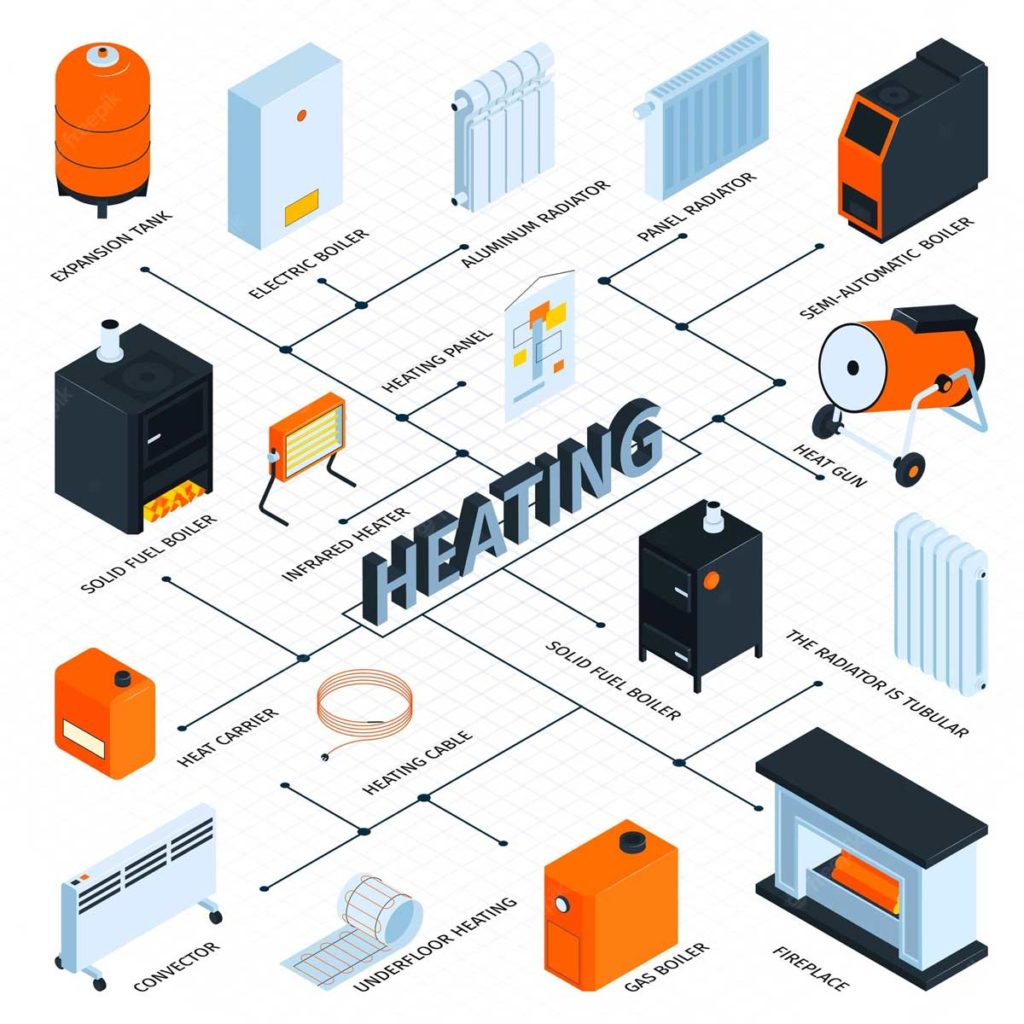Hydronic heating has been around for many years and is widely used in homes and buildings. So, what exactly is hydronic heating and how does it work? In this blog post, we’ll be covering everything you need to know about hydronic heating; from its history, to the different types of systems available, benefits of using it and much more. You’ll also learn about the best practices when it comes to its usage in your home or building as well as any potential issues that may arise from using it. Keep reading to find out everything you ever wanted to know about hydronic heating.
What Is Hydronic Heating?
Hydronic heating is a type of central heating system that utilizes water as its primary heat source. This water is circulated through pipes throughout the building to transfer the heat to your home’s indoor environment. As such, hydronic heating systems work by using a water source to create steam, which is then used to heat your home. Although the steam heats your indoor environment, the water is used to transport the heat from one area of your building to another.
A hydronic heating system can be a great addition to your home or building, as it allows for better temperature control as compared to other heating methods. You can use a hydronic system to keep your indoor environment at a precise temperature all year round, regardless of the weather conditions outside. This makes it an ideal choice for places that experience extreme weather conditions, such as areas at high altitudes or near large bodies of water.
How does a hydronic heating system work?
Most hydronic heating systems work by using a boiler to create steam as the primary source of heating. This steam is then transported throughout your home through pipes. Once inside the building, the steam will travel through radiators or piping within the walls, where it will be directed to the rooms with the highest heat loss. From there, the steam will cool down, turn back into water and then travel back to the boiler. The process of turning from steam into water and back again is known as condensation. This is a natural process that happens with all materials under certain conditions.
A hydronic heating system will work best when the water is heated to a specific temperature, as well as a specific flow rate. A hydronic heating system that uses water as its primary heat source is known as hydronic heating, while a system that uses a mixture of water and steam is called steam heating.
Types of Hydronic Heating Systems
There are several types of hydronic heating systems, each of which will vary depending on the type of boiler being used, pressure and flow rate. While all of these systems utilize water as the primary source of heat, they all work a little bit differently.
An open-loop hydronic system: An open-loop system is one in which the water circulates through the system without coming into contact with the air. This type of hydronic heating system is known for being energy-efficient and low-maintenance.
A closed-loop hydronic system: A closed-loop system is one in which the water is constantly in contact with the air. This type of system is typically used in industrial settings, as it offers a high degree of control when it comes to temperature. Closed-loop systems also have a high degree of reliability, as they are very low-maintenance.
Pros of Hydronic Heating
If you’re in the market for a new heating system, you might want to consider hydronic heating. Here are some of the pros of using a hydronic heating system in your home or building.
Effective in providing consistent indoor temperatures – One of the biggest advantages of using a hydronic heating system is that it allows for more precise control of your indoor temperatures. This is because hydronic systems allow you to precisely control how much heat enters your indoor environment.
Energy-efficient – As hydronic systems are primarily driven by water, they are more energy-efficient than other types of central heating systems. This means that they require less energy to heat your indoor environment.
Minimal indoor noise – Another advantage of hydronic heating systems is that they produce minimal indoor noise. This is due to the fact that hydronic systems are driven by water, which produces very little noise when it comes into contact with air.
Cons of Hydronic Heating
While hydronic heating systems are great for many applications, they aren’t without their faults. Here are some of the cons of using a hydronic heating system.
Higher upfront cost – One of the biggest drawbacks of using hydronic heating is that it is typically more expensive than other types of central heating systems. This is because a hydronic system requires specialized equipment and plumbing that are more expensive to install than the other types of central heating systems. However, hydronic systems typically have lower operating costs when compared to other types of systems, which can help offset the initial costs of installing them.
Requires more maintenance – Another disadvantage of using a hydronic system is that it requires more maintenance than other types of systems. This is due to the fact that hydronic systems use water, which requires additional maintenance as compared to other heating systems.
How much does a hydronic heating system cost?
The cost of a hydronic heating system will vary depending on several factors. Factors that affect the cost of a hydronic heating system include the size of your home, the type of boiler being used, the size of your building and much more. As such, it is difficult to give a specific price range for hydronic heating systems. To get an accurate price estimate for your specific home, it is best to contact a heating contractor.
How to Install a Hydronic Heating System?
If you’re thinking of installing a hydronic heating system in your home, then you’re in luck. The process of installing a hydronic system is relatively straightforward, provided that you follow the proper steps. Before installing a hydronic heating system, you’ll want to make sure that your home meets the minimum requirements. To do so, you’ll need to make sure that your home has enough room for a boiler, as well as enough floor space for the pipes that will transport the water. You’ll also want to make sure that your home has enough electrical service to power the boiler. This is because a hydronic heating system requires a source of electricity to run.
If you’re thinking about hydronic heating for your home, you’ll need to make sure it’s installed correctly. That’s where Friel Heating & Air Conditioning comes in. We offer a variety of hydronic solutions, tailor-made for each customer’s unique situation. Our expert technicians will make sure your hydronic heating system is installed correctly, so you can enjoy all the benefits it has to offer. Contact us today to learn more about our hydronic heating solutions.
Conclusion
Hydronic heating systems are great for many applications and can be used in residential and commercial settings. They are effective in providing consistent indoor temperatures and require less energy than other types of central heating systems. They are also more energy-efficient than other types of systems. That said, hydronic heating systems are more expensive than other types of systems and require more maintenance. However, they provide a great source of heat, which is why they are commonly used in residential and commercial settings. If you’re in the market for a new heating system, you might want to consider hydronic heating.

